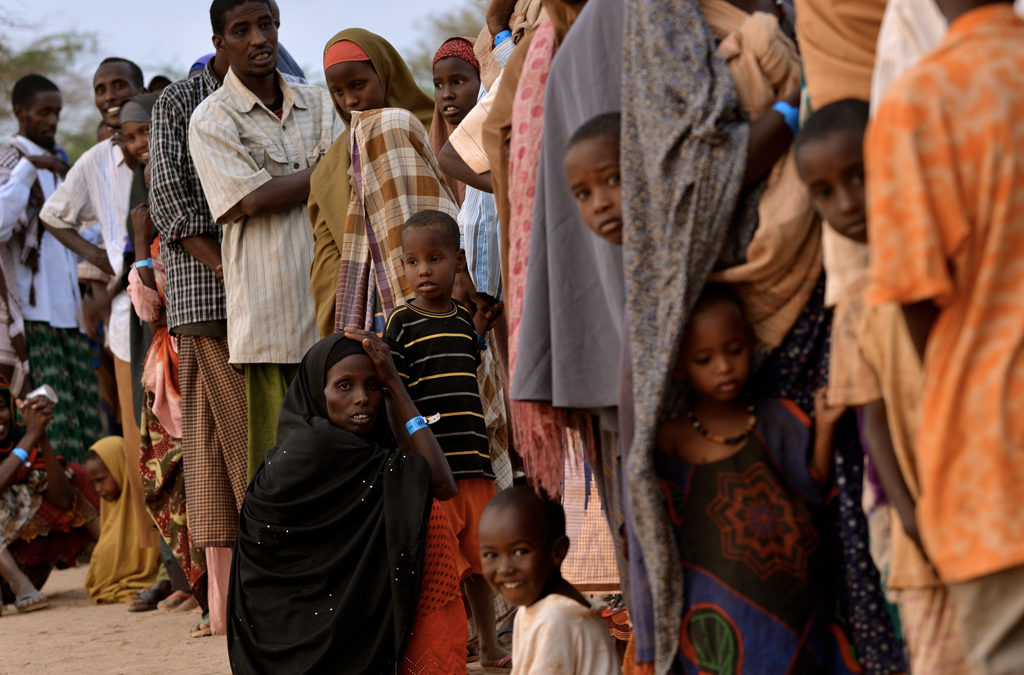Ryne Clos
The United States has adopted a static and stark picture of al-Shabaab that has magnified the truly dangerous aspects of the organization and alienated dimensions of the movement that could contribute to a solution to Somalia’s problems.
Al-Shabaab is an armed social organization and movement that has expertly framed the Somali conflagration in such a way as to maximize its mobilization efforts. It depicts itself as primarily a youth movement, having started its recruitment as a nascent court militia in 2004 among Mogadishu’s orphans and abandoned children. In fact, the name al-Shabaab means “youth.” The youth are a new voice, with a different message and set of experiences than the traditional government elites, and they are more willing to accept al-Shabaab’s anti-clan ideology.
AN INDIGENOUS MOVEMENT
As an indigenous movement, al-Shabaab is attuned to the history of Somalia and to the sensibilities and desires of its people. It provides a counter-hegemonic challenge to an international community that has insisted on statebuilding as the panacea to the various issues plaguing Somalia. It stands against the international policy of attempting to prop up of the Transitional Federal Government (TFG) in spite of its demonstrated failure to establish authority within the country.
The February 2006 invasion of Somalia by Ethiopia was a key moment in establishing al-Shabaab as an important factor in Somali politics. Al-Shabaab was able to reframe and reshape the fighting as a struggle for national self-determination. It gained 3 of the 18 seats on the Executive Council of the Islamic Courts Union (ICU) administration, which temporarily controlled South-Central Somalia in 2006, with 3 additional seats going to Islamists within the al-Shabaab umbrella.
Al-Shabaab is a diverse and hydra-headed organization that has shown a willingness to negotiate power-sharing agreements.
In some respects al-Shabaab has been making the transition from an ideological, dogmatic court militia consisting of a hardened core of true believers backed by mercenary guns to a broadly based political movement. It is a diverse and hydra-headed organization that has shown a willingness to negotiate power-sharing agreements to maintain control over territory.
Even as it battles for control of Mogadishu with the transitional government and its international backers, al-Shabaab has stabilized control elsewhere via negotiations with local elders and a newfound tolerance for venerated Sufi shrines. It is trying to govern in the areas it controls, imposing a sometimes draconian version of law and order. It is evolving into a state-like body with a greater chance of imposing political order over Somalia than the fledgling transitional government.
Al-Shabaab was added to the U.S. terrorism list in March 2008, 28 months before its first act of violence outside of Somalia (a bombing in Kampala in July 2010). Rather than allowing the listing to be a hindrance, the organization tried to use it to its advantage. Al-Shabaab converted the terrorist designation and its subsequent international notoriety into capital, literally, as other listed Islamist groups began to provide increased financial support to the organization.
A PRAGMATIC MOVEMENT
The international community continues to look at al-Shabaab through the frame of “international terrorism” and refuses to acknowledge the shifting reality of al-Shabaab’s efforts to transition toward a greater governing role. In spite of its rigorous application of an Islamist lens, al-Shabaab has proven to be a pragmatic movement, forming broad coalitions with other groups within Somalia when such alliances serve its interests and even adapting a softer stance toward various social practices it once considered unacceptable.
Moderate voices within al-Shabaab’s leadership have been silenced, with dire consequences for peacebuilding efforts within Somalia.
The terrorist designation of al-Shabaab has forced peacebuilding NGOs to evacuate most of the area of Somalia to avoid coming into contact with the organization and being accused of colluding with “terrorists.” This is hindering the transformation of al-Shabaab toward more pragmatic deal-brokering while strengthening the hold of hardened dogmatism. More moderate voices within al-Shabaab’s official leadership have been increasingly silenced. This has created dire consequences for peacebuilding efforts within Somalia. Imposing a static identity on a dynamic group like al-Shabaab is neither helpful for advancing peace nor honest to the reality of its evolving social character.
AN INCLUSIVE PEACE PROCESS
Al-Shabaab has successfully contested both the secular statist impositions of the international community and the clannist psychology of traditional Somali power-holders. It has attempted to push forward a pragmatic agenda of change and political participation by previously excluded groups. Rather than excluding al-Shabaab from negotiations, international policymakers should encourage its participation as they seek to create an inclusive peace process.
Ryne Close is a Ph.D. student in history and peace studies at the University of Notre Dame. This post is adapted from his article in the new report “Somalia: Creating Space for Fresh Approaches to Peacebuilding.” (pdf)



